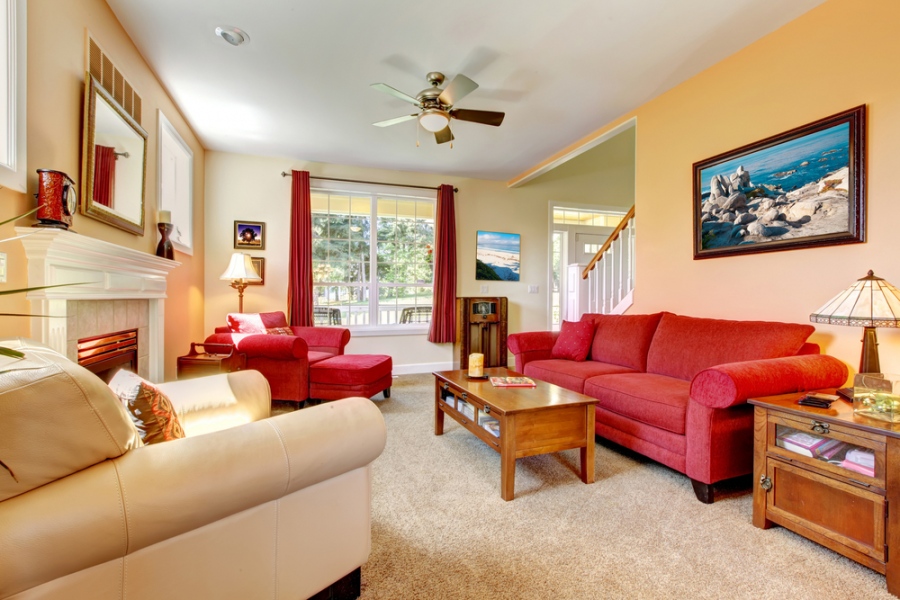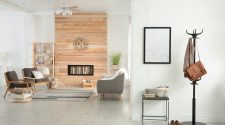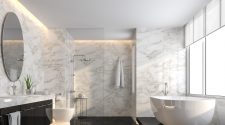Your home serves many purposes. It’s your refuge from the outside world, but it’s also a place to entertain guests. It’s a place to sleep and a place to play. It’s a place to hide from other people and a place to gather with your family. A great home does all of these things well—and looks good doing it.
Yes, looks matter. Interior design is not as skin-deep as some might think: The way your space looks and feels can affect your daily routines, your moods, and even your overall mental health. That’s why it’s important to craft a home you love with smart interior design choices. If you’re new to interior design, fear not: We’re covering the basics right here, right now.
Mix It Up: Shapes, Fabric, Materials, and Colors
When you decorate a room, you have certain tools in your design toolkit. This doesn’t necessarily mean that you have a couch, a coffee table, a painting to hang on the wall, and so on; you may well have those things, but we’re talking about something different here. What really matters is that you have shapes, fabrics, materials, and colors.
You might have a slick leather or a soft plush fabric with your couch. Your table might be made of wood or metal; it might be brightly painted or stained a more natural color. And your painting will have colors along with brush-stroke textures and other details. Or maybe you’ll hang a mirror instead—that would be slick, reflective, and might even be round. You have so many options!
Making a beautiful room means finding the right mix. Get a variety going: Multiple textures and materials are more interesting than monotonous matching in most cases. Find the right balance, though, by finding “echoes” of one piece’s shape, color, texture, or another core characteristic in other pieces within the room. You should also consider which of these traits go together in certain design aesthetics. For example, a rustic natural piece of Amish furniture can go with a green fabric couch—not because they “match,” but because they both give off that cozy rustic vibe.
Arrange Furniture for “Zones” and Flow
You can start designing your spaces right now with the furniture that you already have. Just walk out into a room and start moving furniture around!
Of course, it matters where you move all this stuff to (and from). So how ought you arrange the furniture? Generally, you should look to create "zones" and flow.
When we talk about “zones,” we’re talking about virtual rooms within physical ones. For example, your front door may open up into your living room; a “zone” near the door would make sense. You could mark one off with a welcome mat; arrange furniture like benches, shoe racks, and shelves around it; and even add appropriate art or something functional, like a key rack. Mark out similar zones by moving furniture fearlessly away from walls: Can you create a conversation zone? A reading nook?
At the same time, don’t divide your room up too much. Avoid creating dead ends or severing one part of the room from another. Your room will look and feel better when it “flows,” which in this case means that it allows you to walk smoothly from zone to zone without getting stuck or feeling like you’re trapped in a maze.
Get the Goods
Those new to interior design often focus on the decorative aspects of the process but don’t sleep on the functional side of things. A home is designed to be lived in and used for specific purposes, not just displayed. Similarly, it’s not just the fabrics and wall hangings that should look great in your home—functional home goods should look nice, too!
Not everyone thinks of things like blenders and toasters as decorative objects, to say nothing of things like children’s toys, video game controllers, and (gasp) toilet plungers. But the objects in your house can add to its beauty, either by looking great on their own when displayed prominently (my, what a nice toaster!) or by being properly organized and hidden in plain sight (a colorful basket of children’s toys can look beautiful while making your space feel more authentic, more lived-in, and more like home).
A great organization system will get you far, but you may want to replace a few things. This need not be expensive, though. Shopping at a budget-friendly retailer like Outlet Sale can net you all kinds of beautiful home goods, from the most elegantly functional kitchen devices to the more decorative sorts of things that you might want to arrange on shelves or hang on walls.
If you find the right balance, you’ll take home great goods for less and will get things that pull double-duty as useful home goods and beautiful decorations. The art of marrying form and function—in this case, the way your home looks and the way your home feels to actually live in—is what interior design is all about.














